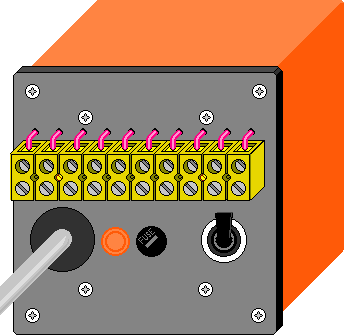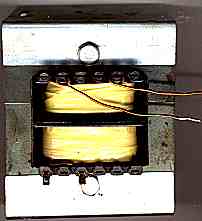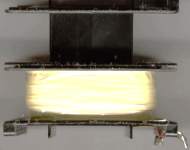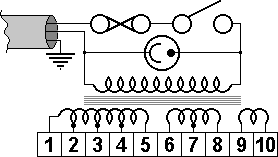| "E" Home |
|---|
| Prev. Menu |
|---|
Drop Machine
Similar Transformer Project
|
ELECTRONICS "A-Z" INDEX |
|---|
| Back |
|---|
|
|
Drop Machine Similar Transformer Project |
Electrical Transformer for Drop Machine |
|---|
| Safety is important... If you are not confident or competent to carry out this work, then please consult someone who is! A trained electrical engineer will be able to follow the directions on this page to produce the article required. |
|
If you do not already understand transformer theory you
should be able to find the information on the web, an overview is
given on Transformers.
Design considerationsThe heating coils in the drop machine are small and will require low voltages. Different coils will require different voltages, but coils with lead wires encased in brass tubing will require even lower voltages due to the relatively low lead impedance. The finished transformer will be required to deliver four or five amps, but the duty involved is low, only a few minutes in any hour. The processes that are required to re-calculate the turns and gauge of wire are also covered in another project, and reading that may help your understanding of this one. |

|
|

|
|---|

 The bobbin will look something like this, once the secondary turns
have been removed.
The bobbin will look something like this, once the secondary turns
have been removed.

Terminating the conductors

| I had available some off cuts of 4 mm2 solid single core cable and I fitted 100 mm lengths of this into each way of my terminal block. I then used a 6 mm diameter steel rod as a former to bend each wire at right angles, so that they would fit through a row of suitably spaced holes in the front plate of the enclosure. |

|
Disclaimer! I am a qualified electrical and electronic engineer and as such I take precautions to ensure my own safety and the safety of others. I cannot be held responsible for the work of others that are not under my direct supervision. |
Written... 13 October 2001, Revised... 18 December 2001, Revised... 28 February 2002, New Domain... 06 April 2004, |